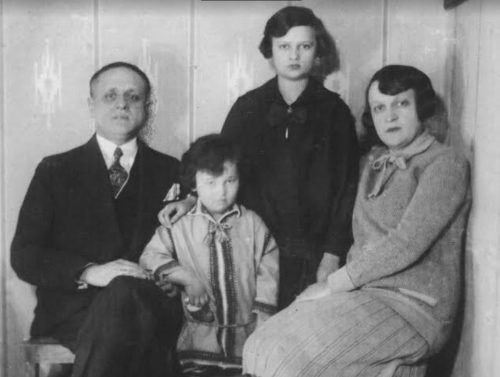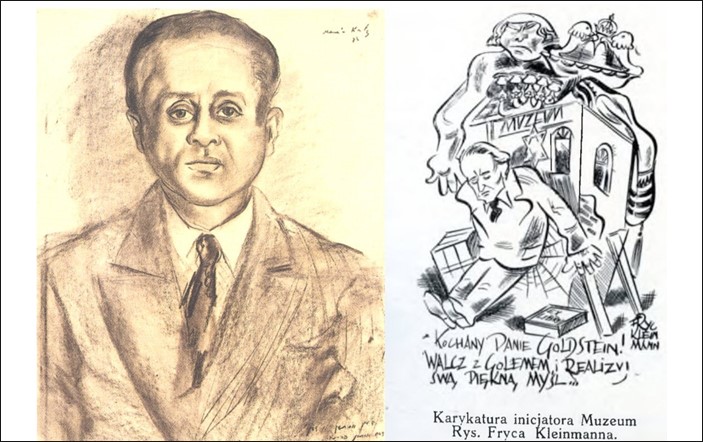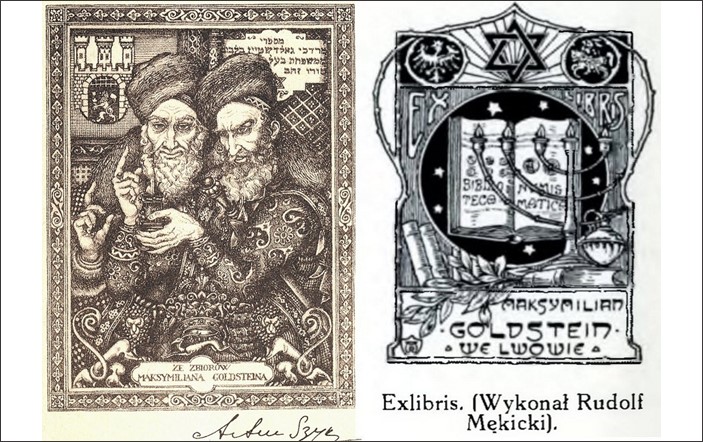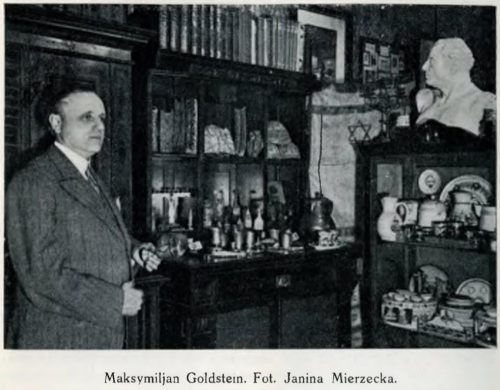Maximilian Goldstein: The life achievements and personal tragedy of the guardian of Galicia’s Jewish treasures
The exhibition "Reminiscences of the Jewish world of Galicia" opened at Lviv’s Museum of Ethnography and Arts Crafts on March 28, 2018. The display affords visitors the opportunity to view an invaluable collection of art and artifacts and to learn more about the city’s prewar Jewish community. It also brings to the forefront the life and fate of Maximilian Goldstein, the man who collected most of the displayed objects.
Public announcements and media coverage of the exhibition state that Goldstein "had vanished without a trace during the Holocaust". Yet authoritative biographical accounts indicate that Goldstein shared the fate of many of his Jewish compatriots: he was murdered in 1942 in Lviv’s Janowska Concentration Camp, along with tens of thousands of other Jews from Lviv and other parts of Eastern Galicia.
Shimon Briman discusses the extraordinary life of Goldstein, and the importance of his collection. The Ukrainian Jewish Encounter thanks Dr. Sergey Kravtsov, Senior Researcher at the Center of Jewish Art, Hebrew University in Jerusalem, whose insights contributed to a better understanding of Goldstein and the era in which he lived and died.
A native of Lviv, Maximilian (Mordechai) Goldstein (1880–1942) was a distinguished collector of Jewish antiquities, as well as a numismatist and specialist in Jewish folk art. He built his Judaica collection over a period of more than thirty years, placing special emphasis on Jewish artifacts of Galicia.
These masterpieces were shown at a spectacular exhibition held in the spring of 1933 at the City Museum of Fine Arts, alongside artifacts collected by the Society of Friends of the Jewish Museum in Lviv. Among the many visitors who recorded their rave reviews in the “Book of Memories” were such eminent Ukrainian cultural figures of Lviv as Ilarion Svientsitsky, Oleksa Novakivsky, and Sviatoslav Hordynsky.
Goldstein’s ties with the world of Ukrainian art and culture date to the beginning of the twentieth century. It was Goldstein himself who authored an article in a Jewish newspaper about the opening of the Ukrainian National Museum in Lviv in 1913. He singled out the museum’s patron, Metropolitan Andrei Sheptytsky, who declared that the founding and opening of such a museum was proof of the nation’s development.
Summarizing his 1933 exhibit, Goldstein co-authored the book Jewish Folk Culture and Art in Poland (in Polish, 1935) with the poet and critic Karol Dresdner. The publication featured hundreds of photographs depicting items from Goldstein’s Lviv collection. The foreword was written by the well-known Jewish historian Professor Majer Bałaban.
After the establishment of Soviet power in western Ukraine, Goldstein was appointed director of the Jewish Museum in Lviv, proof of which was the signatures of the writer Petro Panch and the Lviv scholar Ivan Karpynets in November 1939. In January 1940 Goldstein became a staff member of the Municipal Museum of Arts and Crafts, where he held the post of senior scholarly associate.
The capture of Lviv on 30 June 1941 by Hitler’s armies opened the final and tragic chapter in the life of the distinguished connoisseur and collector of the treasures of Jewish antiquity.
A week later, on 7 July 1941, after the start of the German occupation and a terrible pogrom in Lviv, Goldstein and the management of the City Museum of Artistic Crafts concluded an agreement stating that the museum would accept the Goldstein collection for safekeeping. This agreement about the temporary deposit of the collection was notarized on 12 July 1941. At the same time, all the artifacts remained as a special collection in the residence of Goldstein, who was granted the status of custodian of the city museum’s treasures.
On 30 August 1941 the Jewish collector brought part of his collection—furniture, porcelain, faience, and textiles—to the Museum of Artistic Crafts. In these difficult times and subsequently, Goldstein gained the support of Ilarion Svientsitsky, the official responsible for museum affairs in the city of Lviv.
Unfortunately, none of these intercessions undertaken by Ukrainian museum directors in December 1941 were able to stop the forcible eviction of Goldstein and his wife and daughter from their home on 15 Novyi Svit Street, from where they were taken to the Jewish ghetto.

In the spring of 1942, a group of Ukrainian museum directors in Lviv requested the municipal authorities not to deport Goldstein from the city. The collector continued to protect artifacts of Jewish culture, seemingly unaware of the mortal danger that was looming over him.
In August 1942, when over 40,000 Jews were dispatched to the Belzec death camp for extermination as part of the “Great Action” that took place in the Lviv ghetto, Goldstein wrote a letter that was a veritable plea to be rescued: “I can only ask that I be recruited for such work, so that, in the event of the next deportation from Lviv—and as a special favor—my employed daughter and I be allowed to stay in Lviv.”
Dismissed from the Museum of Arts and Crafts, Goldstein continued to be employed there as “working Jew № 31596.” But in October 1942 he was sent to the Janowska concentration camp on the outskirts of Lviv, where he was shot in December 1942. Goldstein’s wife and daughter also died in the Janowska camp.
In 2002 Yosef Shaked, a cousin of the Lviv collector, sent this information to Yad Vashem. Goldstein’s collection ceased to exist as a single entity when it was divided among the museums of Lviv.

In 1994 Beit Hatfutsot (the Museum of the Jewish Diaspora, recently renamed the Museum of the Jewish People) in Tel Aviv held an exhibit devoted to the “Treasures of Jewish Art from Galicia,” consisting of items from the collection housed at the Lviv Museum of Ethnography and Crafts, most of which were from the Goldstein collection.
The Israeli relatives of the collector, who died in the Holocaust, went to court, demanding the return of Goldstein’s personal property, which had been deposited with the Lviv museum for temporary storage. The exhibit remained in Israel during the court proceedings, which ended in 1996. The court finally declared that the matter lay outside its jurisdiction because the crime did not happen in Israel. The exhibit returned to Ukraine, but a final legal decision on the ownership of the Goldstein collection has not been rendered to this day.
Professor Faina Petryakova, an art historian and researcher of Goldstein’s legacy, wrote: “He was humiliated continuously, in various ways, masterfully, and coarsely by Gentiles and co-religionists, morally and psychologically, simply jealous people and occupiers of his native land. They humiliated him during his life and afterwards…. They took away the main thing in his life—the collection—then they took his life away.”
Text: Shimon Briman (Israel)
Scholarly consultation and photographs: Dr. Sergey Kravtsov, Senior Researcher at the Center for Jewish Art, Hebrew University of Jerusalem.
Translated from the Ukrainian by Marta D. Olynyk.
Edited by Peter Bejger.






















